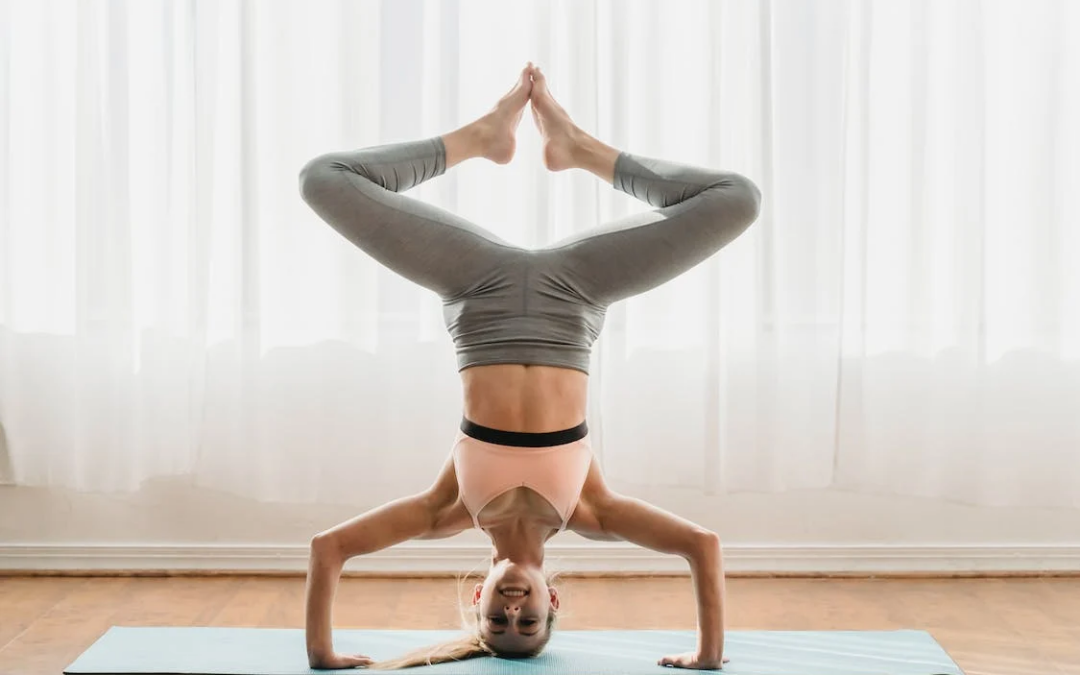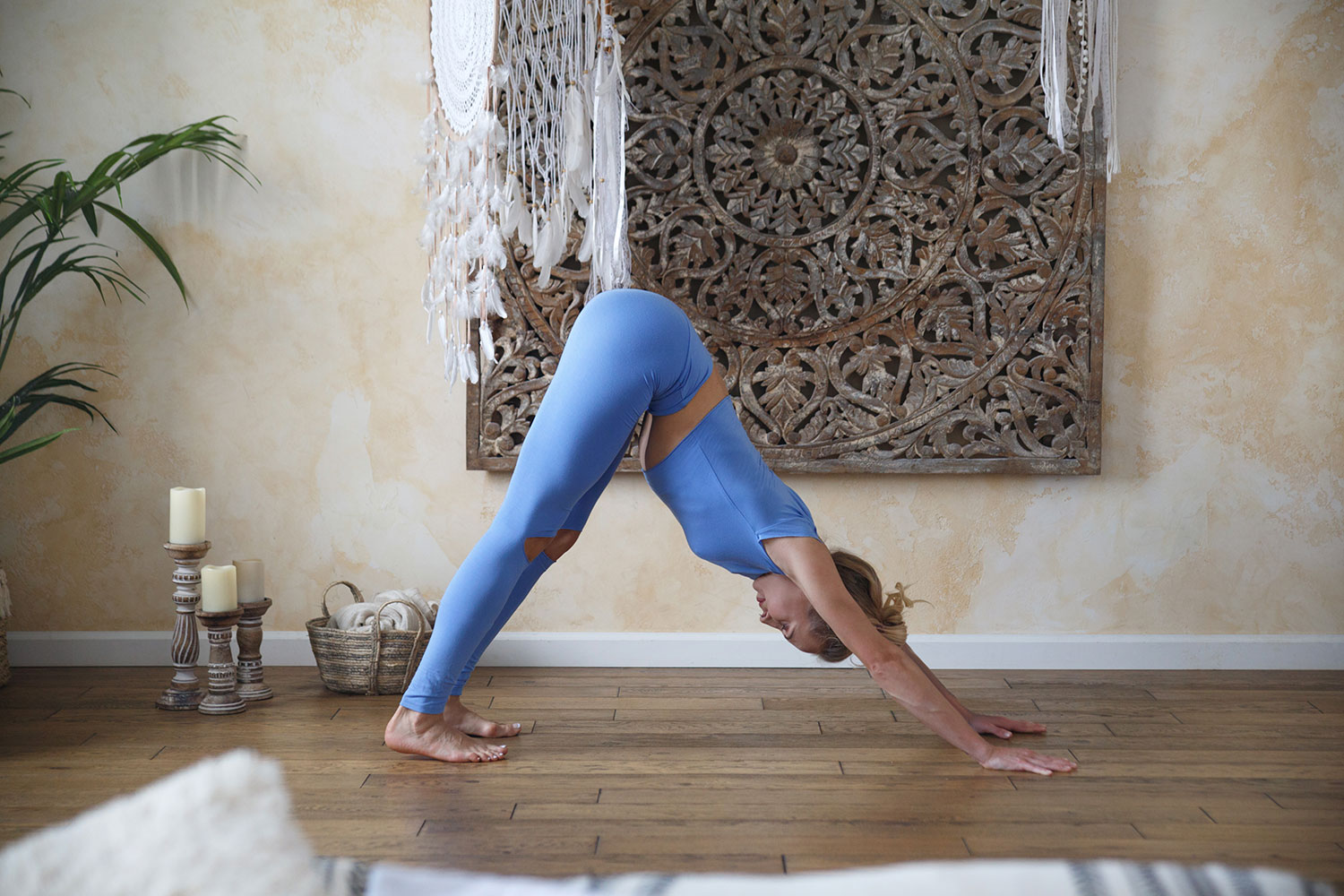
Getting Started with Ashtanga Yoga: A Beginner’s Guide
If you’re looking for a yoga practice that challenges both your body and mind, Ashtanga yoga might be just what you need. With its precise movements, focus on breath, and meditative elements, Ashtanga yoga is a fantastic way to boost your physical and mental health. Here’s everything you need to know to dive into Ashtanga yoga as a beginner!
Key Takeaways
- Ashtanga yoga is a dynamic practice that combines breath, movement, and meditation to improve both physical and mental health.
- The practice follows a specific sequence of postures, each linked with a particular breath.
- For beginners, Ashtanga yoga offers many benefits, such as better strength, flexibility, balance, and posture, as well as reduced stress and improved self-awareness.
- As a beginner, remember to listen to your body, practice regularly, seek a qualified teacher, and be patient and persistent.
- Ashtanga yoga can be adapted to suit all fitness levels, making it accessible for anyone.
What is Ashtanga Yoga?
Before jumping into the practice, let’s understand what Ashtanga yoga is all about. Ashtanga is a type of yoga popularized by K. Pattabhi Jois in the 20th century. The name “Ashtanga” comes from two Sanskrit words: “ashta” (eight) and “anga” (limb). These eight limbs are the foundation of the practice, covering all aspects of yoga, from physical postures to breath control and meditation.
The Eight Limbs of Ashtanga Yoga:

- Yama: The first limb, which consists of five moral codes that guide how we treat others. These include non-violence, truthfulness, non-stealing, chastity, and non-greed.
- Niyama: The second limb, consisting of five personal practices that guide how we treat ourselves, such as cleanliness, contentment, self-discipline, self-study, and surrender to a higher power.
- Asana: This limb involves the physical postures (asanas) that help strengthen and prepare the body for deeper spiritual practices. Ashtanga is known for its dynamic and challenging sequences.
- Pranayama: This refers to breathing exercises that help regulate the flow of energy in the body. Ashtanga uses specific breathing techniques that sync with the movements.
- Pratyahara: The withdrawal of the senses, where you turn your attention inward and become aware of your thoughts and emotions.
- Dharana: Focus and concentration. In Ashtanga, this means focusing your mind on one point, like your breath or a body part.
- Dhyana: Meditation. This is where sustained concentration quiets the mind, bringing peace and calm.
- Samadhi: The final limb, which is a state of blissful union with the divine—transcending the ego and experiencing oneness with the universe.
Preparing for Your Ashtanga Yoga Practice

Before you jump into Ashtanga, there are a few things to consider to make sure your practice is safe and effective.
1. Finding a Teacher
Ashtanga can be challenging, especially for beginners, so finding a qualified teacher is key. Look for an instructor certified by the K. Pattabhi Jois Ashtanga Yoga Institute or another reputable organization. If possible, observe a class beforehand to get a feel for the teacher’s style.
2. Choosing the Right Yoga Mat
Your mat should provide good traction, especially since Ashtanga can get sweaty. A sticky mat will keep you from slipping during your practice. If you’re just starting out, you may also want a thicker mat for extra cushioning.
3. Dressing Appropriately
Wear comfortable, form-fitting clothes that allow for easy movement. Avoid loose clothing, as it might get in the way during poses. Also, bring a towel to wipe away sweat.
4. Setting Up Your Space
Find a clean, quiet, and well-ventilated area for your practice. Make sure there’s enough room to move around, and keep a water bottle nearby. Silence or turn off your phone to avoid distractions.
Understanding the Ashtanga Yoga Sequence

Ashtanga yoga is practiced in a set sequence of postures, and it’s important to follow the progression. The primary series (Yoga Chikitsa) is the foundation, consisting of 75 postures. The intermediate series (Nadi Shodhana) is more advanced, adding new poses to build on the primary series.
Ashtanga is a progressive practice, which means you should master each series before moving on to the next. Practice consistently, ideally every day or a few times a week, to see progress.
Ashtanga Yoga Poses for Beginners

Here are some of the foundational Ashtanga poses you’ll encounter as a beginner:
Sun Salutations (Surya Namaskar A and B)
A series of poses performed in a flowing sequence to warm up the body and prepare for more intense postures. There are two main variations in Ashtanga: Surya Namaskar A and Surya Namaskar B.
Standing Poses
Standing poses build strength, stability, and balance. They also help open up the hips and shoulders. Some examples include:
- Warrior I (Virabhadrasana I)
- Warrior II (Virabhadrasana II)
- Triangle Pose (Trikonasana)
- Extended Side Angle Pose (Utthita Parsvakonasana)
- Tree Pose (Vrikshasana)
Seated Poses
These poses focus on flexibility and calming the mind. Some examples include:
- Seated Forward Bend (Paschimottanasana)
- Head-to-Knee Pose (Janu Sirsasana)
- Lotus Pose (Padmasana)
- Boat Pose (Navasana)
- Bound Angle Pose (Baddha Konasana)
Backbends
These strengthen the back and open up the front of the body. Examples include:
- Upward Facing Dog (Urdhva Mukha Svanasana)
- Cobra Pose (Bhujangasana)
- Bow Pose (Dhanurasana)
- Camel Pose (Ustrasana)
- Wheel Pose (Urdhva Dhanurasana)
Inversions
Inversions help improve circulation and balance. Some common inversions include:
- Shoulder Stand (Sarvangasana)
- Headstand (Sirsasana)
- Handstand (Adho Mukha Vrksasana)
Benefits of Ashtanga Yoga for Beginners

Ashtanga yoga offers a wide range of physical and mental benefits for beginners:
Physical Benefits
- Increased strength, flexibility, and balance
- Better posture and alignment
- Reduced risk of injury
- Enhanced cardiovascular health
- Boosted immune system
- Improved digestion
Mental Benefits
- Reduced stress and anxiety
- Improved focus and concentration
- Increased self-awareness and mindfulness
- Boosted mood and energy levels
- Improved sleep quality
Tips for Beginners Practicing Ashtanga Yoga

Here are some tips to help you get the most out of your Ashtanga yoga practice:
- Listen to Your Body: Ashtanga can be intense, so it’s important to know your limits. Don’t force yourself into poses and take breaks when necessary.
- Practice Regularly: Consistency is key. Aim to practice at least a few times a week, ideally every day, to see steady progress.
- Find a Qualified Teacher: Ashtanga is complex, so work with a certified teacher to ensure you’re practicing safely and effectively.
- Be Patient and Persistent: Progress takes time. Don’t get discouraged if it takes a while to master poses. Trust the process!
FAQs About Ashtanga Yoga
Q: Is Ashtanga yoga suitable for beginners?
Yes! Ashtanga yoga can be practiced by beginners, but it’s important to start slow and work with a qualified teacher who can guide you.
Q: How often should I practice Ashtanga yoga as a beginner?
It’s recommended to practice at least a few times a week, ideally every day. Even a short daily practice can make a big difference.
Q: Do I need to be flexible to practice Ashtanga yoga?
No, flexibility is not a requirement. Ashtanga yoga will actually help improve your flexibility over time.
Q: Can Ashtanga yoga help reduce stress and anxiety?
Yes, the focus on breath and movement in Ashtanga yoga is great for calming the mind and reducing stress and anxiety.
Q: Are inversions safe for beginners?
Inversions can be challenging, so they should only be practiced under the guidance of a qualified teacher. Start slow and build up to more advanced inversions over time.
Conclusion
Ashtanga yoga is a powerful practice that can transform your body and mind. Whether you’re looking to improve flexibility, build strength, or reduce stress, Ashtanga offers a holistic approach to health and wellness. Remember to start slow, be consistent, and enjoy the journey of learning and growth in your practice!
